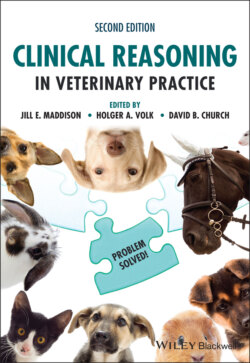Читать книгу Clinical Reasoning in Veterinary Practice - Группа авторов - Страница 72
When is clinical pathology useful?
ОглавлениеIn general, clinical pathology is most useful for progressing our understanding about secondary GI diseases causing vomiting. In contrast, for most primary GI disease, clinical pathology tests may provide information about the systemic effects of vomiting but not about the aetiology of the gut disorder.
Even if primary GI disease is strongly suspected, it may be helpful to perform appropriate tests to assess the patient’s hydration and electrolyte/acid–base status, as prolonged and severe vomiting may cause biochemical derangements such as alkalosis or acidosis, prerenal azotaemia, hypokalaemia, hyponatraemia and hypochloraemia. Noting, however, that diagnostic procedures aimed at visualising the GI tract such as plain and/or contrast radiographs or endoscopy are more diagnostically useful in primary GI disease. Ultrasonography or exploratory laparotomy can be useful diagnostically for both primary and secondary GI disorders.
If you are unable to determine from the history and physical examination whether the animal has primary or secondary GI disease, it is cheaper, less invasive and usually quicker to investigate secondary GI disease first with appropriate tests and then investigate primary GI disease as needed if clinical pathology is normal. If there is any risk that the patient has an intestinal obstruction, then plain abdominal radiographs +/– ultrasonography should be performed as soon as possible. And if the patient has a concurrent cough, then this requires urgent investigation, as a serious disorder causing regurgitation is very possible.
